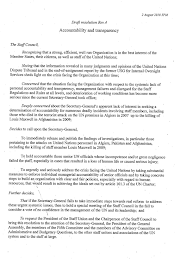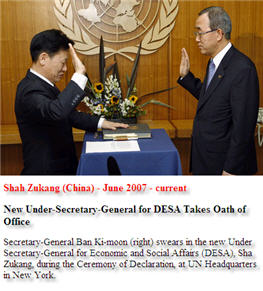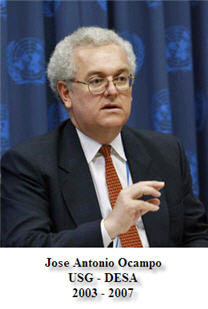By Dan Gainor
Two years ago, U.N. researchers were claiming that it would cost “as much as $600 billion a year over the next decade” to go green. Now, a new U.N. report has more than tripled that number to $1.9 trillionper year for 40 years.
So let's do the math: That works out to a grand total of $76 trillion, over 40 years -- or more than five times the entire Gross Domestic Product of the United States ($14.66 trillion a year). It’s all part of a “technological overhaul” “on the scale of the first industrial revolution” called for in the annual report. Except that the U.N. will apparently control this next industrial revolution.
The new 251-page report with the benign sounding name of the “World Economic and Social Survey 2011” is rife with goodies calling for “a radically new economic strategy” and “global governance.”
Throw in possible national energy use caps and a massive redistribution ofwealth and the survey is trying to remake the entire globe. The report has the imprimatur of the U.N., with the preface signed by U.N. Secretary-General Ban Ki-Moon – all part of the “goal of full decarbonization of the global energy system by 2050.”
Make no mistake, much of this has nothing to do with climate.
The press release for the report discusses the need “to achieve a decent living standard for people in developing countries, especially the 1.4 billion still living in extreme poverty, and the additional 2 billion people expected worldwide by 2050.” That sounds more like global redistribution of wealth than worrying about the earth’s thermostat.
That’s because it is. The report goes on and says “one half of the required investments would have to be realized in developing countries.” In other words, $38 trillion would go to the developing world.
The survey details where that money would go. “Survey estimates that incremental green investment of about 3 percent of world gross product (WGP) (about $1.9 trillion in 2010) would be required to overcome poverty, increase food production to eradicate hunger without degrading land and water resources, and avert the climate change catastrophe.”
So eradicating hunger and overcoming poverty are now part of the climate debate.
It’s also interesting to notice the escalating scale the U.N. is using for its costs. This is a 200 percent increase from the previous Stern Report, which called for 1 percent of global WGP. But that wasn’t enough so Stern revised his claim in 2008, warning there were “many ways of acting to make it more costly” and said 2 percent was needed. Apparently so. Now it’s 3 percent.
It wasn’t that long ago – Nov. 11, 2009 to be exact – when lefty writer Naomi Klein, author of "The Shock Doctrine: The Rise of Disaster Capitalism,” told readers the cost of going green was going to be $600 billion a year.
Eighteen months later, the price of our “one last chance to save the world” has increased $13 trillion – and that’s just over the next decade.
The Klein piece was controversial because she admitted the left was looking for the first world to pay a “climate debt,” what she described as “the idea that rich countries should pay reparations to poor countries for the climate crisis.” The new U.N. report doesn’t use those terms, but they are there in spirit.
The U.N. calls for a push toward the “green economy” even though it freely admits “there is no unique definition of the green economy.” The survey's introduction rationalizes the massive cost by explaining “the green economy concept is based on the conviction that the benefits of investing in environmental sustainability outweigh the cost of not doing so.” So, by that rationale, any cost is sustainable.
And, as in all things from the U.N., government is the solution: “Governments will have to assume a much more central role” in making the change to a green economy. Where there’s government, there must be control and “active industrial and educational policies aimed at inducing the necessary changes in infrastructure and production processes.”
Educational policies? They are just a start. Try energy caps “if, for instance, emission reduction targets cannot be met through accelerated technological progress in energy efficiency and renewable energy generation, it may be necessary to impose caps on energy consumption itself in order to meet climate change mitigation targets in a timely manner.”
That would lead naturally to “the prospect of ‘prosperity without growth,’” and even the U.N. admits that “may not be very appealing.” No matter. We’ll all have to accept that and the “major structural transformations of economies and societies.”
Some of those “societal transformations” include living in more urban areas, as the report went on to discuss the wonders of “Japan’s compact urbanization” and bemoan the cost of individual homes filled with furniture.
The report noted that all of this $76 trillion in spending in based on the “precautionary principle” decided at the 1992 United Nations Conference on Environment and Development in Rio de Janeiro. According to that principle, Under-Secretary-General for Economic and Social Affairs Sha Zukang wrote, “in the absence of scientific consensus that a particular action or policy is harmful to the public or to the environment, the burden of proof that the suspect action or policy is not harmful rests with the party or parties implementing it.” In other words, even if the U.N. is wrong on climate change, we should still spend $76 trillion to fight it.
Ironically, the report came out just one day after climate scientists were complaining that Chinese coal use was driving a temporary bout of “global cooling.” As the liberal Huffington Post explained, the cooling is from “all that sulfur pollution in the air from China's massive coal-burning, according to a new study.”
Dan Gainor is the Boone Pickens Fellow and the Media Research Center’s Vice President for Businessand Culture. He is a frequent contributor to Fox News Opinion. He can also be contacted on FaceBookand Twitter as dangainor.






















No comments:
Post a Comment